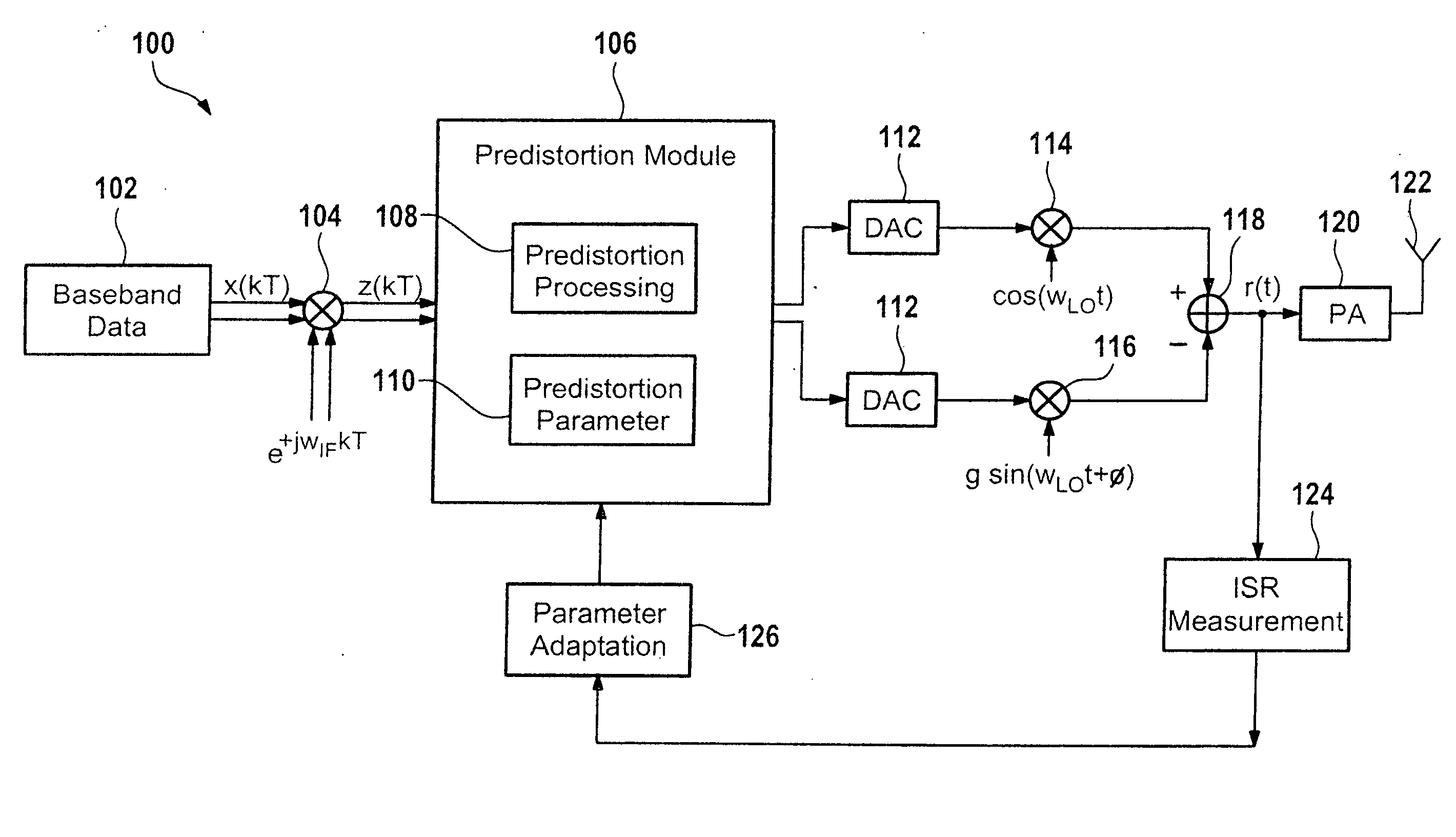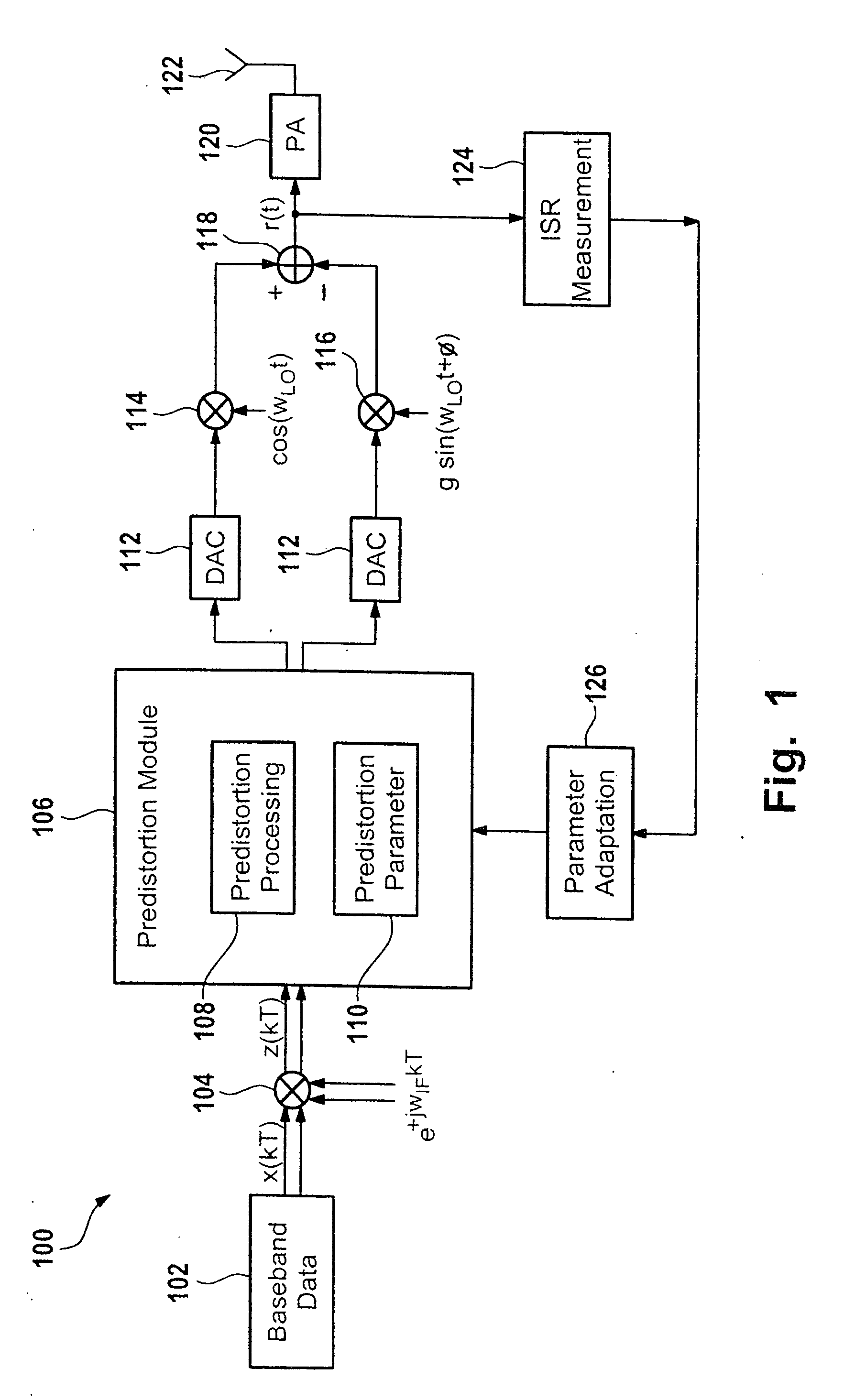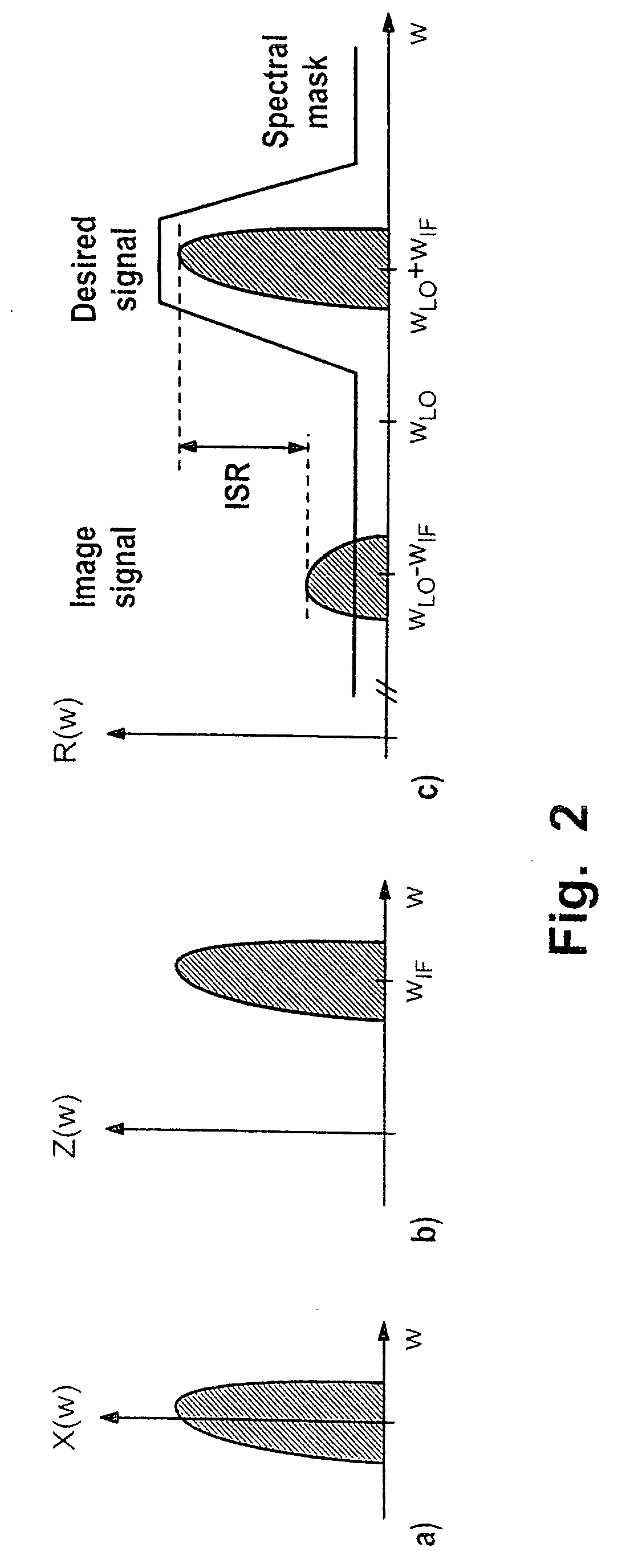Transmitter and transmission method
a transmission method and transmitter technology, applied in the field of transmission methods, can solve the problems of reducing the i/q of the transmitter, and restraining the transmission of image signals
- Summary
- Abstract
- Description
- Claims
- Application Information
AI Technical Summary
Benefits of technology
Problems solved by technology
Method used
Image
Examples
Embodiment Construction
[0024]FIG. 1 shows a transmitter 100. The transmitter 100 has a digital-IF architecture. The upconversion of the transmit signal 102 from baseband to the RF carrier frequency is realized by a tuneable digital I / Q upconversion and a subsequent tuneable or fixed analog I / Q upconversion.
[0025] Perfectly balanced I / Q mixing (equal gain in the I- and in the Q-branch, exactly 900 phase shift between both phases of the oscillator) would lead to an infinite rejection of the image signal such that no costly image rejection filter would be required. However, due to hardware tolerances a perfectly balanced analog I / Q mixer is not feasible, resulting in a limited suppression of the image signal. A radiation of the unwanted residual image is critical, since the compliance with the spectral mask of the desired communication standard might be violated. Therefore the effects of I / Q imbalance are compensated by using digital signal processing.
[0026] The transmitter 100 has a digital mixer 104. The...
PUM
 Login to View More
Login to View More Abstract
Description
Claims
Application Information
 Login to View More
Login to View More - R&D
- Intellectual Property
- Life Sciences
- Materials
- Tech Scout
- Unparalleled Data Quality
- Higher Quality Content
- 60% Fewer Hallucinations
Browse by: Latest US Patents, China's latest patents, Technical Efficacy Thesaurus, Application Domain, Technology Topic, Popular Technical Reports.
© 2025 PatSnap. All rights reserved.Legal|Privacy policy|Modern Slavery Act Transparency Statement|Sitemap|About US| Contact US: help@patsnap.com



